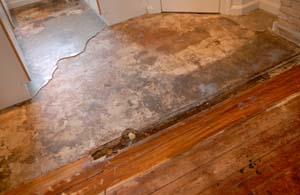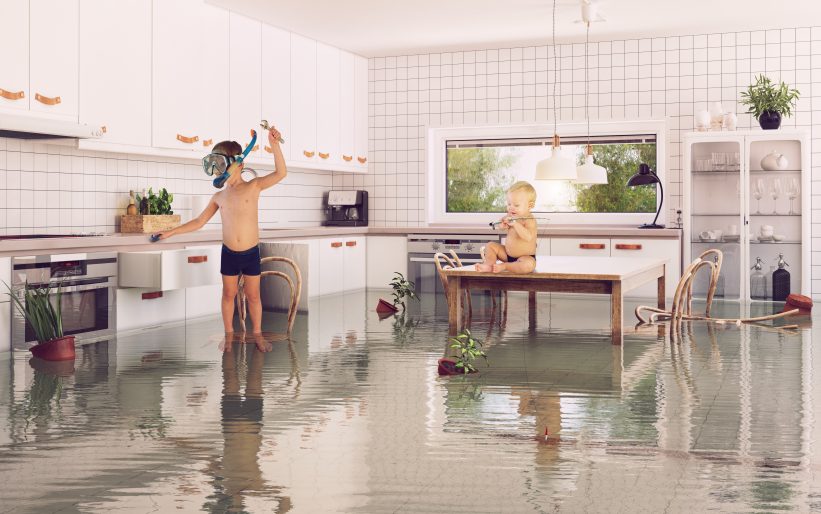Do's & Don'ts of Water Restoration.
Call TodayThe article in the next paragraphs involving What You Can Do At Home To Prevent Fire And Water Damage is really entertaining. Read on and make your own personal conclusions.

Water gives life, however water intrusion on some components where it's not expected to be can result in damages and also inconvenience. In addition, residences with water damages smell stuffy and old.
Water can come from numerous resources like hurricanes, floods, burst pipelines, leakages, and also sewage system concerns. If you have water damages, it's better to have a working knowledge of safety precautions. Here are a couple of guidelines on just how to manage water damage.
Do Prioritize House Insurance Coverage Insurance Coverage
Seasonal water damage can originate from floods, seasonal rains, as well as wind. There is also an incident of an unexpected flood, whether it originated from a defective pipeline that suddenly bursts into your home. To secure your residence, obtain residence insurance policy that covers both disasters such as natural catastrophes, and emergency situations like broken plumbing.
Do Not Forget to Shut Off Energies
When calamity strikes and you're in a flood-prone location, turn off the primary electric circuit. Turning off the power stops
electric shocks when water comes in as water works as a conductor. Don't fail to remember to shut off the main water line valve as a way to avoid even more damages.
If the floodwaters are obtaining high, maintain your furnishings secure as they can move around and cause additional damages.
Do Stay Proactive and also Heed Climate Signals
If you live in a location tormented by floodings, stay proactive and also prepared at all times. Listen to the information and also emptying warnings if you live near a body of water like a lake, creek, or river .
Do Not Overlook the Roof
Your contractor should take care of the defective rain gutters or any kind of various other indicators of damages or weakening. An inspection will prevent water from flowing down your walls and soaking your ceiling.
Do Focus On Little Leakages
A burst pipe doesn't happen in a vacuum or overnight. There are red flags that can draw your attention and also show to you some weakened pipes in your home. Indications of red flags in your pipes consist of bubbling paint, peeling wallpaper, water streaks, water discolorations, or leaking noises behind the walls. There are indicators that the pipe will break. Do not wait for an escalation if you see these indicators. Repair service and evaluate your plumbing repaired prior to it results in massive damages to your house, financial resources, and also an individual headache.
Do Not Panic in Case of a Ruptured Pipeline
Timing is vital when it comes to water damages. If a pipeline bursts in your home, instantly shut off your primary water valve to cut off the source as well as avoid more damage. Call a trusted water damage remediation specialist for assistance.
Water gives life, yet water breach on some components where it's not meant to be can result in damage and trouble. In addition, homes with water damages odor mildewy as well as old.
Seasonal water damage can come from floodings, seasonal rains, and also wind. Indications of red flags in your pipes consist of bubbling paint, peeling off wallpaper, water touches, water stains, or trickling noises behind the wall surfaces. If a pipe ruptureds in your home, quickly shut off your major water valve to reduce off the resource as well as protect against more damages.
Some Do's & Don't When Dealing with a Water Damage
DO:
Make sure the water source has been eliminated. Contact a plumber if needed. Turn off circuit breakers supplying electricity to wet areas and unplug any electronics that are on wet carpet or surfaces Remove small furniture items Remove as much excess water as possible by mopping or blotting; Use WHITE towels to blot wet carpeting Wipe water from wooden furniture after removing anything on it Remove and prop up wet upholstery cushions for even drying (check for any bleeding) Pin up curtains or furniture skirts if needed Place aluminum foil, saucers or wood blocks between furniture legs and wet carpet Turn on air conditioning for maximum drying in winter and open windows in the summer Open any drawers and cabinets affected for complete drying but do not force them open Remove any valuable art objects or paintings to a safe, dry place Open any suitcases or luggage that may have been affected to dry, preferably in sunlight Hang any fur or leather goods to dry at room temperature Punch small holes in sagging ceilings to relieve trapped water (don't forget to place pans beneath!); however, if the ceiling is sagging extremely low, stay out of the room and we'll take care of it DO NOT:
Leave wet fabrics in place; dry them as soon as possible Leave books, magazines or any other colored items on wet carpets or floor Use your household vacuum to remove water Use TV's or other electronics/appliances while standing on wet carpets or floors; especially not on wet concrete floors Turn on ceiling fixtures if the ceiling is wet Turn your heat up, unless instructed otherwise

Do you appreciate more info about Fire And Water Damage Prevention? Create feedback down the page. We will be glad to listen to your feelings about this blog post. We are looking forward that you visit us again soon. Are you aware of someone else who is fascinated with the niche? Do not hesitate to share it. I am grateful for your time. Visit again soon.